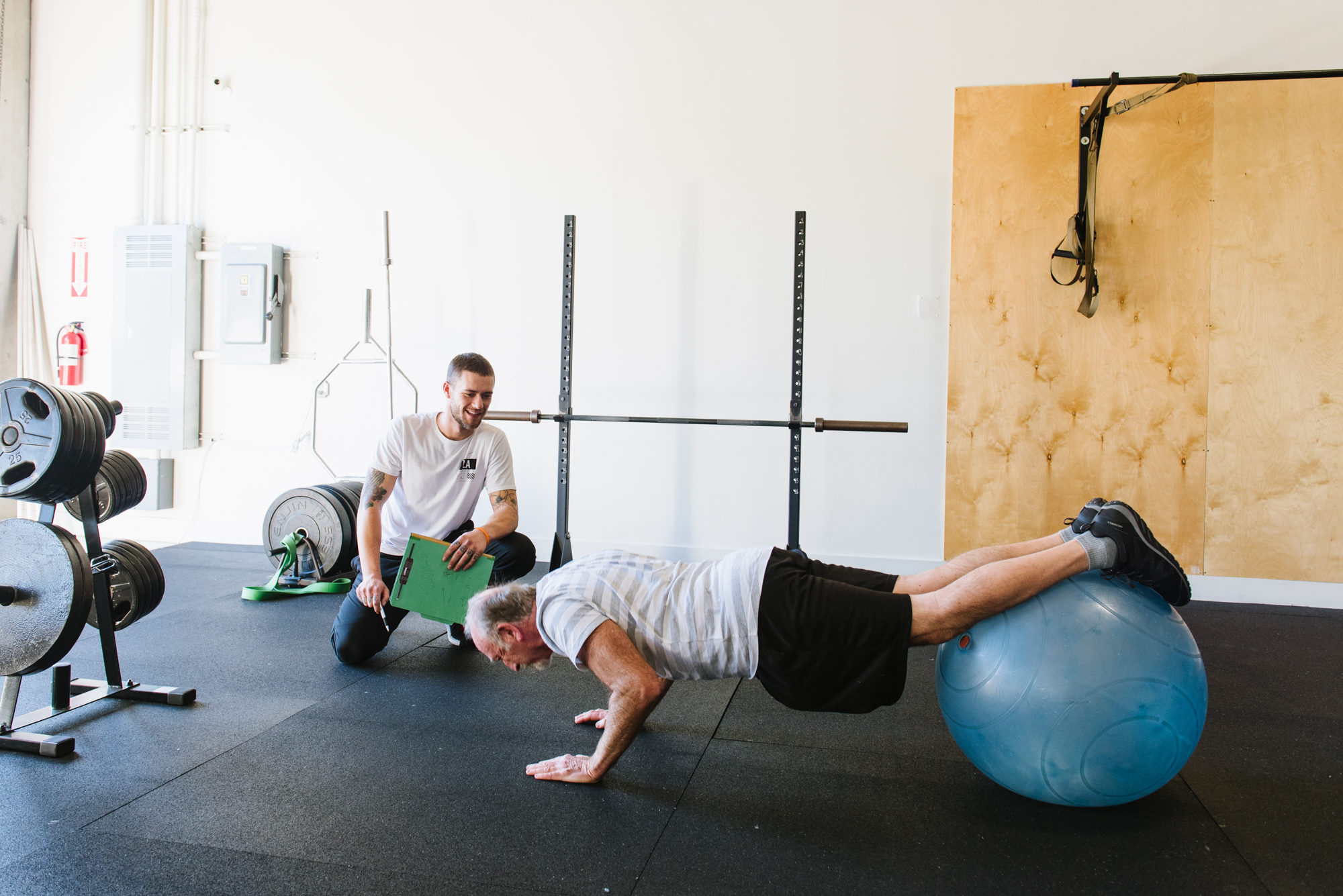Understanding the unique nature behind how muscles contract to create force during muscular interaction is beneficial to the human body. Muscle cells have two primary proteins called myosin and actin that act like Velcro, grabbing onto each other when the brain sends a message to move bones closer or further away from each other. These Velcro-like connections are referred to as cross-bridges existing within a skeletal muscle cell. Cross-bridges must form to create muscular contractions and produce movement throughout the limbs. There are two primary actions involved in the shortening and lengthening of muscle cells. Concentric muscular contraction is when the cross-bridges in the cells shorten, causing a limb to flex. The action of performing a dumbbell biceps curl bringing the forearm closer to the humerus is an example of a concentric contraction. The lengthening of the cross bridges is called the eccentric contraction. For example, lowering the dumbbell during a bicep curl as the arm lengthens.
Muscle cells also have an energy storage supply in which sufficient energy is needed to for endurance throughout the day. As the energy storage within muscle cells deplete, fatigue sets in and the muscles are not as productive in their movements.
Shedding light upon a few terms of exercise physiology and refining your exercise knowledge application supports our efforts to get the most from our exercise sessions. Overworking muscle groups can lead to injury and unmask injuries previously recovered from. We focus on educating our personal training clients in Napa in the beginning stages of an exercise routine how to perform 3 styles of resistance training. These terms are isotonic, isometric, and eccentric themed exercises. Mastering these forms of exercise optimizes their program depending on soreness, if injuries are acting up, or they increasing the challenge of exercise.
Isometric muscular contractions involve the muscle tightening and staying in the “Velcro” position for a prolonged period of time. As the muscles tighten and remain in this position, the energy system is stressed as well as the cross bridges within the muscle fibers. As the energy system within the muscle is fatigued, the body will adapt to match that demand. Over time, the muscle cells will be able to endure longer, and fatigue occurs later. Isometric exercise is great for participants at the beginning stages of an exercise routine. Isometrics are easy on the joints because there is limited mechanical stress. The joints remain in one static position. Only one repetition is needed in this mode of exercise which doesn’t put as much compressive force on the joints but still puts productive stress on the working muscles. It’s one of the safest forms of exercise. If we have clients just coming back from a surgery or significant injury, we prescribe isometric exercises. The most common example of an isometric exercise is the straight arm or elbow plank.
Eccentric themed exercises can serve as a productive progression to improving exercise performance following a 30-day prescription of isometric exercise. This can be best recognized as the slow lowering descent of an exercise movement. A preferred form of eccentric exercise we like to perform with our clients is the eccentric push up. Starting from the straight arm plank position, slowly lower your body for a count of 5 seconds until the elbow meet the ribs. Once the elbows meet the ribs, put the knees down and perform the concentric form of the push up until the elbow are extended. Once the elbows are extended, straighten out the knees and repeat for 5-8 repetitions. The gradual amount of force on upper body muscles while lowering the body activate muscles at different insertion and attachment points. Similar to isometric exercises, eccentric exercise has more time under tension and puts less stress on joints.
Isotonic exercise is the most relatable form of exercise we see people doing in the gym on exercise machines, magazine articles, or demonstration videos from local Napa fit pros we follow in social media. Both the concentric and eccentric movements are involved. The simple dumbbell biceps curl is an example of an isotonic exercise. We progress our personal training clients to perform isotonic exercises once they complete 60 days of isometric and eccentric based exercise prescriptions. Isotonic exercise requires more control and coordination because it is a more dynamic movement. The squat, deadlift, push up, and pull up are example of isotonic exercises. Therefore, ensuring that isometric exercise and the slow lowering motion of the eccentric movement of an exercise is mastered is a critical component before going into the more advanced exercises.
Understanding the unique styles of exercises is important because it gives you a tangible starting point when resuming or just beginning to participate in regular exercise. Take a forecast of where you are in your fitness level. Set your ego aside and demonstrate the mastery of isometric and eccentric techniques first and then progress to the more advance exercises.
Sean McCawley, the founder and owner of Napa Tenacious Fitness in Napa, CA, welcomes questions and comments. Reach him at 707-287-2727, napatenacious@gmail.com or visit the website napatenaciousfitness.com.

